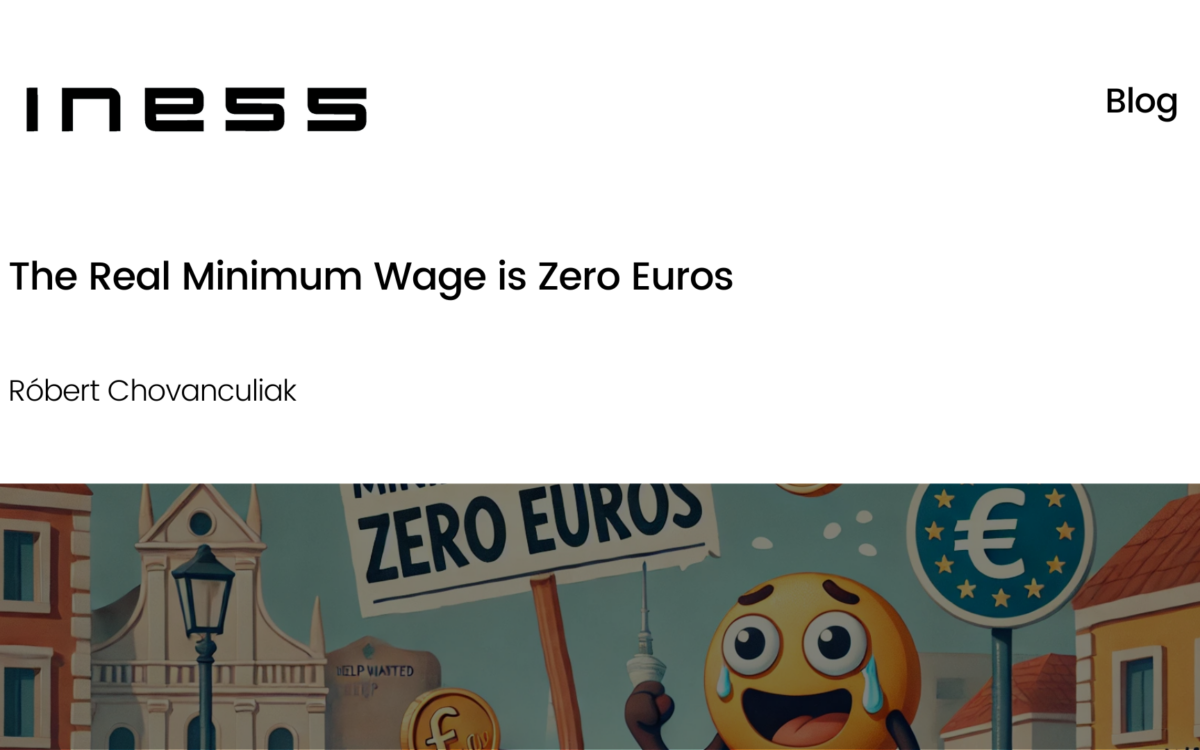Worst Practices in Reducing CO2

Worst Practices in Reducing CO2
Martin Vlachynský // 29 January 2020
The Slovak government has been providing subsidies for electric cars. However, if it had bought emission permits instead and thrown them on the fire, it would have saved fifteen-times more emissions.
The price of CO2 emission permits on the European market has been on the rise for a while and has recently been around €25/ton. Despite that, the Slovak government did not hesitate in paying €364/ton. Slovakia experienced a huge emissions scandal ten years ago, when a private company cashed out most of the allocated permits. Is this the next emissions scandal?
This time, it is not so illicit. No deals were conducted in a dishonest manner in ministerial buildings. We are talking about simple value for money. More specifically, in terms of subsidies for electric cars.
A new 6-million euro subsidy program for electric cars and plug-in hybrids was introduced – and all the subsidies were allocated within 4 minutes of the online launch. For now, let’s put aside the modus operandi of this programme, which was conducted in the form of a rat race
Instead, we will focus only on money. What amount of saved CO2 emissions has the government bought? We will focus solely on electric cars since, when it comes to plug-in hybrids, the variation of emissions is too wide, depending on the way plug-in hybrid is used. As 668 out of the 786 subsidised purchases of cars were electric, and the rate was €8,000 subsidy per car, €5.34 million of the €6 million allocated will be spent on electric cars.
With respect to emissions, an electric car does not start from the same points as a car with an internal combustion engine. Its production has an emissions load of 12 tons because of the battery, while the production of a comparable “fossil polluter” is 9.7 tons (data predicted for 2020 by Energy magazine).
It is the battery that makes the disposal of the electric car even more costly – it costs another 2 tons, while an ordinary car can be disposed for 1.5 ton of emissions*.
Regarding the emissions of day-to-day use, electric cars are the obvious winners, especially in a country with a high degree of low-low carbon electricity generation. Slovakia is such a country, thanks to the dominance of nuclear and hydro generation. To calculate the emissions, we used the governmental Institute of Environmental Policy’s smart calculator. This compares the emission costs of different cars per kilometer. Choosing two similar popular cars – the Hyundai Ioniq and the Hyundai i30 1.4 T-GDi – shows that during a 200,000-kilometer lifespan**, the electric Ioniq produces (via power plants) 4.3 tons of CO2, while the gasoline car produces 29 tons.
From this we can calculate that, in Slovakia, an electric car emits just over 18 tons of CO2 in its life cycle, while a comparable car with an internal combustion engine creates about 40 tons. That’s a significant emissions saving. However, if we divide the €8,000 subsidy by 22 tons of emissions saved, we get a result of € 364 per ton.
There are many alternative ways to use the money to curb emissions. Subsidies on electric buses, subsidies on natural gas buses and cars, “scrappage” for old cars, or even bringing forward the closure of the Nováky power plant could all have been considered
If lowering emissions is really the aim, there is one direct and super-effective solution. If the government simply bought emission permits on the market and threw them on the fire instead of subsidising electric vehicles, it would save almost 15x more emissions.
The planet does not care from which source and territory the emissions originate, all that counts are saved tons of carbon. In addition, no complicated laws, campaigns, websites or consultants would be required to run the subsidy program. The whole process of buying permits would only take a few minutes. Unfortunately, in global warming, politicians do not have cool heads. It is time to put “value for money” back at the heart of decision making.
*One could argue that used batteries can still be re-used as storage units. However, it would not alter the outcome significantly, since battery disposal represents the emission cost of around 0.7 tons of CO2.
** It is difficult to estimate the lifetime range of an electric car. If we consider the optimistic scenario in which one electric car lives up to 400,000 kilometres, the cost for a saved ton of CO2 would still be €163.
EPICENTER publications and contributions from our member think tanks are designed to promote the discussion of economic issues and the role of markets in solving economic and social problems. As with all EPICENTER publications, the views expressed here are those of the author and not EPICENTER or its member think tanks (which have no corporate view).



